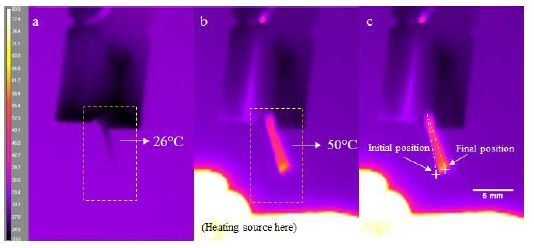GRAPHENE-REINFORCED CHITOSAN/PDMS MORPHING COMPOSITES
Synthetic morphing composites can change their shape actively in response to triggers and have great potential for applications as sensors, soft actuators, in robotics and biomedicine. In this study, graphene-reinforced chitosan/polydimethylsiloxane bi-layered morphing composites are developed, leveraging their differential coefficient of thermal expansion to enable different volume changes within each layer. UV photo-polymerisation/crosslinking serves to improve the bi-layer interface and prevent delamination during morphing. It is possible to design accurate patterned bi-layered structures with the aid of mask-less dynamic light photolithography (DLP). Upon activation by thermal triggers, the bi-layered composite achieves rapid, reversible and multi-repeatable morphing. A finite element model is developed to simulate the deflection of the sample due to anisotropic thermal expansion of the bi-layer. The model can predict the deflection of the bi-layered composite with a relative error of 3.3% in comparison to experimental results.


